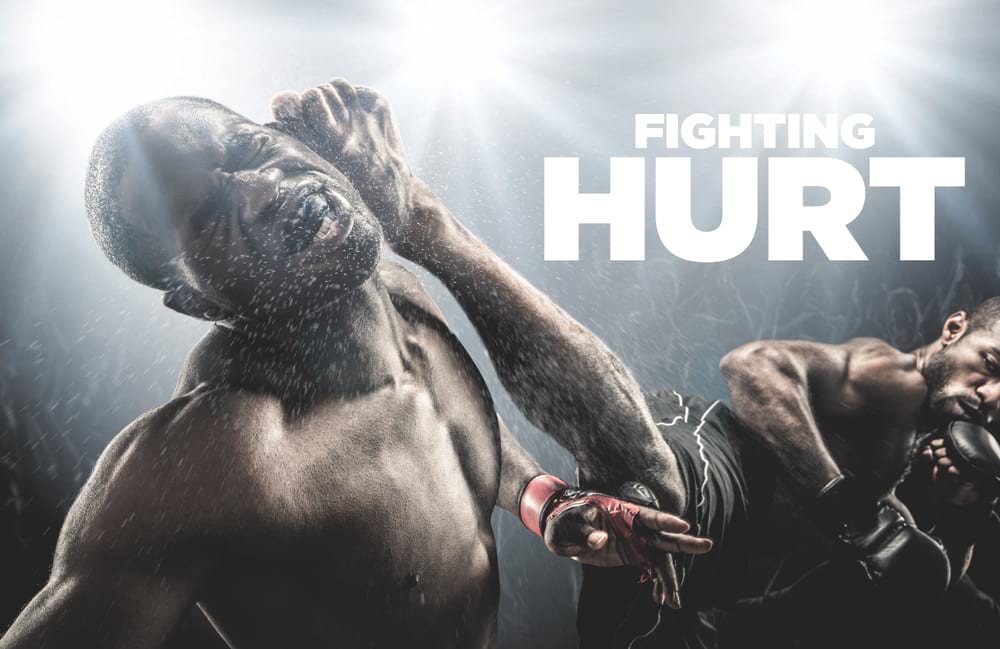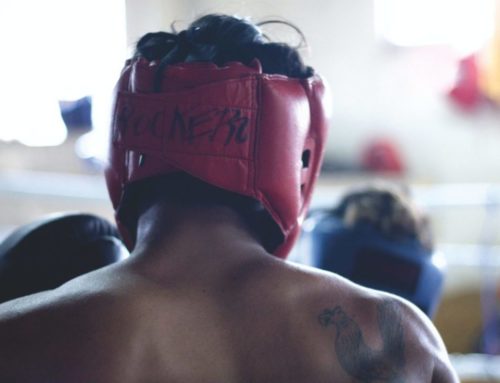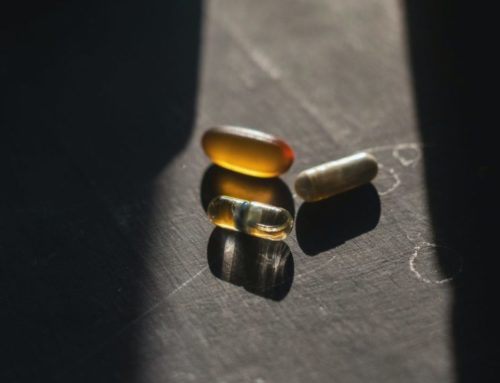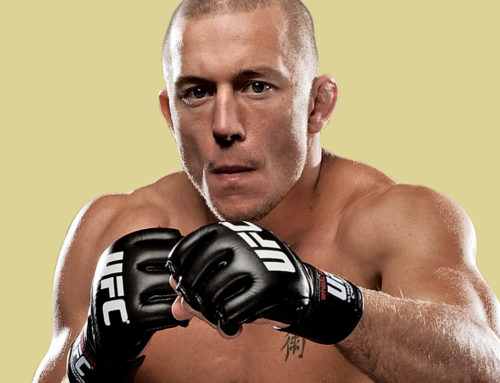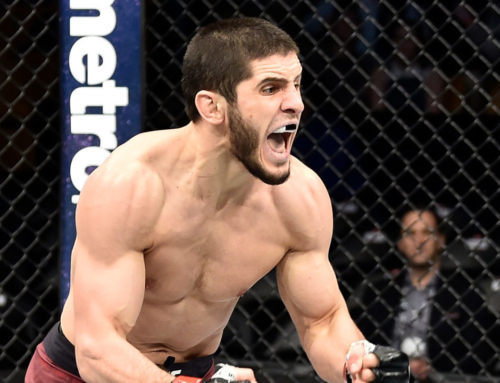We hear it all too often that fighters are fighting hurt, that they are never 100% fit, that they carry injuries into every fight. But how serious is the problem in mixed martial arts? Several influential and expert voices are convinced this is now a major issue within the sport, and that the culture needs to change.
Fighters Only’s Gareth A. Davies spoke to medical advisers, world administrators, trainers, nutritionists, former fighters and head coaches who revealed the sport is riddled with malpractice, with fighters ‘cheating’ medicals and overusing prescription drugs, and with sports science data reeling back the truth to reveal how hormone levels in some fighters, even in their 20s, can mirror 50-year-olds’.
One medical practitioner even told FO the practices of some non-medically trained nutritionists working in the sport are close to “felonious”… The warning signs are there and if fighters continue to spar and fight with injuries, their long-term health is under serious threat.
Design White, CEO of the International Mixed Martial Arts Federation (IMMAF), goes as far as to say that the overuse of prescription drugs is now more prevalent than steroids in the sport, and that the world governing body believes they can come closer to a solution through medical insurance and the formation of a fighter union.
In the course of this investigation, one thing became abundantly clear: a culture change is needed in the sport, with the education of fighters – and indeed the public – about the do’s and don’ts of fighting injured being paramount if the sport places the safety of fighters uppermost in its ethos.
A PART OF THE GAME
Michelle Ingels AP/LAc, who owns Perfecting Athletes, which offers ‘concierge medicine’ for the pro athletes, works with many fighters, including Tony Ferguson, Court McGee, Gray Maynard and world champion boxer Terence Crawford. She is realistic enough to know that fighting is ‘the hurt business’.
“If you’re training and training, you’re going to have to fight hurt at some point. Nobody ever goes into a fight 100%. At least not that I’ve ever met. But it’s the degree to which you’re hurt and where those injuries are that is crucial,” Ingels explains to FO.
“What’s scary is when somebody says, ‘I can’t walk but if I get a cortisone shot I’ll be able to compete tomorrow’. In MMA it’s really scary. At least in NFL and basketball and other professional sports people have salaries and they have off seasons. They get hurt and they can take some time off and then go back to work.
“In MMA they don’t have that option. You don’t get paid unless you fight. They don’t have the same kind of salaries that other athletes do. When they do get paid, they’re not making enough money to not work, have surgery and heal up.”
Unless a fighter has other sources of income, or other ways to help support themselves, says Ingels, it remains extremely difficult to stay healthy and get the healthcare they need and take the time off they need.
“Fighters like Dominick Cruz obviously had the ability to do that but a lot of athletes don’t,” adds Ingels. “We talk about athlete safety and you’ve got these young guys coming in and they’re fighting and fighting because they want to pay their bills and they’re on a lower salary. When they finally do get to the top, they’ve had so many injuries that maybe haven’t been taken care of and they’re more likely to get injured again.”
White, head of the IMMAF, says: “A lot of fighters – if they get injured – tend to just train through it and compete. Injuries can then start to become chronic. They need to start using medication (for) pain management so that they can continue to compete. It’s a downward spiral. It was something which was talked about when I went to the international forum in Lausanne recently.
“The biggest problem in MMA isn’t steroids or performance enhancing drugs. The biggest problem is that a lot of athletes are using prescribed drugs like anti-inflammatory drugs.” It’s chronic, he explains.
Medical care insurance, therefore, says White, is crucial in the sport of MMA. And he believes the IMMAF may have found a solution. “We’ve now found a company that is prepared to insure athletes, even if they are fighting inside the cage. I believe that’s an industry first.
“There are a lot of gyms not insured as well. They tend to get insurance through another traditional sport and then MMA is kind of ‘bolted on’. They keep that quiet. They don’t actually have specific insurance to do MMA. They certainly don’t have insurance to do MMA in the cage. If we can do it, it will be a huge success. The take up will be tremendous. The welfare of the athletes has got to be the priority as far as we’re concerned.”
White, like Ingels, cites a high-profile example of good practice: Cruz again. “If you take care of your body and make sure you get the right medical support, when injured, you’re going to have a longer career. Dominick Cruz, for example, made sure he was 100% fit again before he competed. Now he’s back on top of his game and champion again.”
White also points to the withdrawal of UFC light heavyweight champion Daniel Cormier, late last year, through injury, and the medically-qualified Ingels concurs on insurance. “It would be huge,” she says. “If athletes knew that they could, when they don’t feel well or are injured, see a doctor, get an x-ray, get tested, get physio, get something so they feel better, they’ll perform better, they’ll be better, they’ll have longer careers.
“How many people do you know who work without insurance? You go to a job and you expect to get paid and you expect a salary and you expect insurance benefits.
“A fighter is always going to want to fight. That’s what makes them a fighter. They will go in there with broken bones and concussions and all of these things. There are a lot of things I would allow a fighter to do where I’d tell an average person to take time off, rest, take care of yourself.
“It’s a different breed of human being. That’s what makes them so amazing. But that’s also why they need the right people around them, to protect them and tell them when they truly are making a decision that can endanger their life.”
Worryingly, she adds: “When you look at fighters in their 20s and you look at their hormone profile and their health profile and their injury profile, they really truly do have the profile of somebody in their 50s because they trained and trained and put their body through it. When you hear a 20-something needs testosterone, they have trained so much and put their body through so much stress that it does affect their endocrine system and it does affect their hormones.
“I don’t think they need testosterone replacement or steroids, but they need nutrition and they need to learn how to build those hormones up naturally. I have the lab work to prove it. It can be done. It’s just highly misunderstood.”
CULTURE CONUNDRUM
Javier Mendez, the head coach of American Kickboxing Academy, came under fire last year when high-profile fighters from the camp suffered injuries – namely Cormier, Luke Rockhold and Cain Velasquez. The accusations were that the fighters were sparring too much, or too hard. It wasn’t the first time those complaints were made about the San Jose gym.
“There’s a partial truth to it (the criticism), but there’s more made-up stuff than truth,” Mendez, a renowned former fighter himself, explains. “The bottom line is there will always be injuries in this sport because of the demanding styles and practices. Guys get worn down.
“There’s always things we can do to prevent injuries. We’ve done quite a bit already. But I’m not the boss. The bosses are the fighters. They are the employers and the ones who choose to stay with us. We have to figure out how to minimize those injuries.
“Daniel Cormier should maybe not spar some days but he’ll say, ‘No, I’m sparring’. We say OK. At that point what am I going to say? It’s not like high school football. The fighters don’t have to listen to me. If I give them advice they don’t like, they won’t listen to me. They do what they do. But we still have to look for ways to make sure they are safe in training.”
Mendez adds: “Cain Velasquez, before the Travis Browne fight, did hardly any sparring at all. He’s doing the same now. That’s his choice. We don’t push it. We say no problem. But Daniel wants to spar as much as possible. Luke Rockhold’s the same. He likes to spar.
“Khabib Nurmagomedov too. I have to pull him back sometimes. Sometimes he listens, sometimes he doesn’t. I can’t make them. You do that and what happens? Things don’t go right, who’s going to get blamed?”
Paulina Discepolo Indara is a third-degree black belt in karate, a purple belt in Brazilian jiu-jitsu, health coach, personal chef and co-founder of Perfecting Athletes. She works alongside Ingels in their medical practice. “Many fighters believe they can fight injured and try to fight injured. That injury then becomes worse,” she states.
“On our end, it’s become essential for our company to look out for the fighter and at certain times say this fight is not possible. The same goes for when a promotion wants a fighter to fight. It’s our job to explain to them that it would be irresponsible of them to make them fight
“There is definitely that mindset where no fighter goes into a fight healthy. It’s the culture in combat sports. But when it comes to a tear or a disc in their neck or a torn groin or a blown out knee, these are the times when athletes should not be fighting. But a lot of the time they feel they don’t have a choice for whatever reason.
“The promotion might have said if you don’t take this fight you’ll never fight again for us. We’ll cut you. Or financially they can’t afford to sit out. Cormier was ripped for pulling out, but smarter fighters are pulling out when they need to and that’s a good sign. There was a time when they wouldn’t pull out of fights.”
Mendez agrees. “We should be encouraging them not to fight when they’re injured. I don’t think we should be pushing these guys to fight injured. It’s not a good situation. But it depends on the injury too. If the injury won’t affect their fighting, then no. But if it handicaps them, that’s another story.”
David Mullins, a sports psychologist who works with fighters at SBG and TriStar, notes: “If you’re in a gym where sparring is fighting, that’s not good. What you want is a gym culture and a coach and a team where you respect the difference between sparring and fighting and they understand the seriousness of concussions.”
CHEATERS NEVER PROSPER
Fighters also cheat medicals. “Every fighter has done it at some point in their career,” says Ingels. “On every fight card, somebody’s doing it. It’s just who and how and what they’re going to do. Depending on what commission there is and what they’re looking at, you know the ways to try and get through it. It’s an unfortunate part of the sport.
“The medical people who come and evaluate the fighters do the very best they can. But behind the scenes, those of us who work one-on-one with the fighters and see what’s going on know there’s a lot of ways they can skirt around it. It’s our job to make sure it’s nothing that is potentially life threatening.”
One medically trained practitioner in the MMA industry, who did not want to be named, believes there are those advertising as experts, medically, when they are not. “There’s a few ‘nutritionists’ out there who have incredible marketing ability but no medical background,” FO learns. “This is one of the biggest problems in the industry.
“They’re felony crimes if we want to get right down to it. Anybody can call themself a nutritionist. A lot of the ‘nutritionists’ in this industry are people who have done nothing more than read a book, gone online and watched a documentary that any other person in the world could do. They’ve literally no medical background. They don’t understand the physiology or how the human body works. They don’t know what to do when things go wrong. That more than anything is where it gets scary for me.”
Mullins again, takes a slightly different approach. “You need to know what the difference is between being hurt and being injured and whether there’s risk of further injury or risk of really damaging yourself going in. Coach and fighter need to be aligned on this. That’s a line they both need to be aware of.”
Mullins, however, thinks the situation is actually improving. “Fighters are being smarter now and realize it will have a big impact on their performance on the night and that their performance will have a big impact on them financially and in terms of their career prospects.
“There’s plenty of examples recently of fighters pulling out of fights because of injuries that maybe in the past they would have overlooked. Hopefully, that’s a trend that is improving. You always want fighter safety and welfare to be the key thing. But sometimes that contradicts with what the promoters want.”
Indara adds: “I do not believe this situation is unsolvable. With all things, education is key. The problem is, because people assume this is the way it’s always been done they stick with it. Now we actually have a tremendous amount of data. With athletes and coaches becoming more educated as to the dangers of fighting with specific injuries we will see an improvement in this area.
“It used to be that combat sports athletes would train and spar as hard as possible. They’d go into a fight having had maybe one or two concussions during camp. That’s changing. But overall, we do need a culture change.
“You have commissions that are much more protective of athletes than they were. We just saw this with Rashad Evans at UFC 205. He wasn’t cleared. They said his MRI wasn’t clear and they wanted more information. They didn’t say he’ll never fight again, they just said we need more information. That’s extraordinary to do on such a historic card. That wouldn’t have happened 10 or 15 years ago. They would have just let him fight.”
She adds: “Organizations like the UFC and Bellator are extraordinarily responsible. But there are still areas of concern. It’s not a criticism of the promotion, it’s a criticism of the industry in general.”
Everyone we spoke to supports the set up of a fighters union, being looked into by Bjorn Rebney and Georges St-Pierre at present. It could improve the situation, as it would clearly be looking at medical care and insurance. “There’s increasing talk of a fighters’ union and that is something I’d like to see happen,” concludes Mullins. “That will give fighters a bit of leverage.”
Ingels agrees wholeheartedly. “Fighters give their blood, sweat and tears and their life for the sport, which makes millions upon millions of dollars for the biggest companies. But these athletes make a nominal amount of money compared to other sports. The entire culture in the sport of MMA needs to change.”
*** Feature originally published in the March 2017 issue of Fighters Only ***

